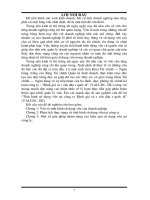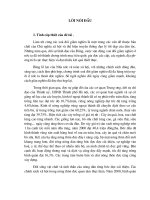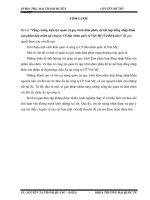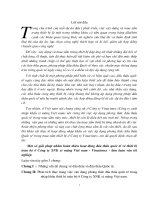Đầu châm quốc tế
Bạn đang xem bản rút gọn của tài liệu. Xem và tải ngay bản đầy đủ của tài liệu tại đây (1.96 MB, 76 trang )
Scalp acupuncture
Yu Qi MD(China), AP
Overview of Scalp Acupuncture
Scalp acupuncture is a
relatively modern
acupuncture method.
One of the Chinese styles
was attributed by Dr. Jiao
Shunfa, a physician in
Northern China, and it has
been used in China since
1971.
Overview of Scalp Acupuncture
• The principle of scalp acupuncture is very
straightforward: to stimulate the diseased
area of the brain in order to facilitate a return
of function in that area.
Overview of Scalp Acupuncture
• All scalp points are representations of the
underlying functional areas of the brain. Thus,
the most common use of scalp acupuncture
will be in diseases in which there is brain
damage, such as CVAs or severe head injuries.
Jiao’s Protocol and
Stimulation Areas
1.
2.
3.
4.
5.
6.
7.
8.
9.
The Standard Line
Motor Area
Sensory Area
Foot Motor Sensory Area
Chorea-Tremor Controlled
Area
Vasomotor Area
Vertigo-Auditory Area
2nd Speech Area
3rd Speech Area
10.
Usage Area
11.
Optic Area
12.
Balance Area
13.
Gastric Area
14.
Hepatocystic Area
15.
Thoracic Area
16.
Reproduction Area
11
The Standard Line
• The anterior-posterior midline: a midline of
the head connecting the glabellum with the
lower border of external occipital
protuberance.
• The eyebrow-occipital line: a line from the
mid-point of the upper border of the eyebrow
diagonally to the tip of the external occipital
protuberance.
Motor Area
• Location:
• It is located over the anterior central convolution
of the cerebral cortex, being a line starting from a
point 0.5cm posterior to the midpoint of the
anterior-posterior midline of the head and
stretching diagonally to the juncture between the
eyebrow-occipital line and the anterior border of
the corner of temporal hairline is indistinct, draw
a vertical line upward from the middle point of
the zygomatic arch to the eyebrow-occipital line,
the intersection of the two lines is the projection
of the Motor Area.
Motor Area
• Indications:
• The upper 1/5 of this area : paralysis of the
lower limb of the contra-lateral side;
• The middle 2/5 of this area : paralysis of
upper limb of the contra-lateral side;
• The lower 2/5 of this area: central facial
paralysis of the contra-lateral side, motor
aphasia, dropping saliva, impaired speech.
Sensory Area
• Location:
• Over the posterior central convolution of
cerebral cortex, a line parallel and 1.5 cm
posterior to the Motor Area.
Sensory Area
• Indications:
• The upper 1/5: low back and leg pain of the
contra-lateral side, paresthesia, numbness, neck
pain, tinnitus;
• The middle 2/5: pain, numbness or paresthesia
of upper limb of the contra-lateral side;
• The lower 2/5: numbness of the face of the
contra-lateral side, one side headache, trigiminal
neuralgia, toothache and mandibular joint
arthritis.









